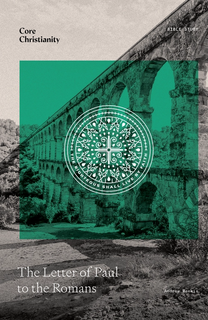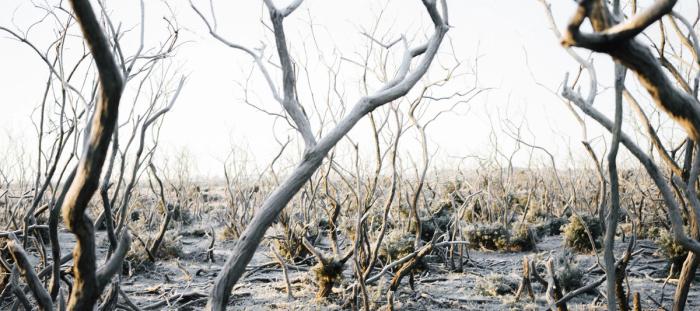This article is part of our series, “Cloud of Witnesses: Stories from the Church.” Read more from the series here.
Early on a Wednesday morning, a small, brown-eyed girl named Preena arrived at the village of Dohnavur in southern India. The seven-year-old runaway was brought to Amy Carmichael, a Christian missionary living in the village. Preena told Amy that she had run away from a temple where she was to be “married to the gods.” Amy didn’t know at the time that this referenced the practice of sending young girls (and boys) to work as temple prostitutes. The first time Preena ran away, she traveled 20 miles back home, but she was caught and brought back to the temple where her hands were branded as punishment. She ran away again, this time finding shelter at a church. From there she was brought to Dohnavur. Amy’s passion for the gospel, love of justice, compassion for others, and tenacity compelled her to respond. She devoted herself to helping the vulnerable and exploited children of India.[1]
Amy’s Journey to India
Amy was born on December 16, 1867, in Northern Ireland to a moderately wealthy Ulster Presbyterian family. At age 15, her parents’ faith became her own, and from this point forward, she focused on following the Lord by serving and sharing the gospel of Christ with others.[2] Despite her family’s financial difficulties and the unexpected death of her father in 1885, Amy still sought to care for others, like the children in low-income neighborhoods of Belfast. During these earlier years of life, her faith was deepened and strengthened as she not only attended church but went to Christian conventions. At one of these, in 1887, she connected with a missionary, Robert Wilson, who would become a dear friend and mentor, teaching her about overseas missions. By age 25, Amy was set on being a missionary, and when she was set on something, nothing would stop her.[3]
At first, Amy wanted to go to China. China Inland Mission accepted her and was going to send her but turned her down at the last minute due to health concerns. Undeterred, Amy set her sights on Japan and, in March of 1893, she left England to work with the Japanese Evangelistic Board. She worked in Japan until she developed neuralgia, a condition the doctors said was due to Japan’s climate. But she would not stop pursuing a life on the mission field! Amy simply moved to Ceylon (modern-day Sri Lanka) to continue working as a missionary.
Upon hearing Wilson had suffered a stroke, Amy traveled back to England at the end of 1894 (he fully recovered). During this time, Amy continued making plans for going back to the mission field. On October 11, 1895, she left for India to work with the Church of England Zenana Missionary Society. She would never return to England.
The Early Years at Dohnavur
India was (and is) a challenging place for a missionary to go. Amy entered a world where the predominant religion was Hinduism, where many Christians were nominal, and where the social structure was determined by a caste system in which women and the poor disproportionately suffered. Amy was not in India long before she saw suttee, the practice of burning a widow alive as a sign of loyalty to her dead husband.[4] India was a place that could be very hostile to Christianity, but Amy was not a woman to back down from a challenge if she believed she was doing the work of God.
Partnering with missionaries Thomas and Catherine Walker, Amy traveled from village to village preaching the gospel. This itinerant style of evangelism meshed with her conviction that missions should be about sharing the gospel first and foremost.
The villagers frequently responded to the gospel with disinterest or rejection. It wasn’t until 1898 that Amy saw two women become Christians. Then, on March 7, 1901 Amy met Preena.[5] Hearing Preena’s story of escaping life as a temple prostitute gave Amy a new purpose and goal. She wanted to help the children of India and felt a heavy burden for those who had been forced into prostitution. Not long after taking in Preena, four more girls came to Amy for refuge. She found an empty missionary house in the village of Dohnavur and set up a home for the kids. By June of 1904, Amy had 17 children under her care. By the end of the year, the number reached 30. Amy could no longer spend her time as a traveling evangelist, she needed to care for the children God was bringing to her. With the help of the Walkers, Dohnavur was established as a Christian village and a place where poor and needy children could find a home. This didn’t mean that Amy was no longer doing the work of an evangelist—in 1907, six children were baptized into the church.
With the help of the Walkers, the home in Dohnavur continued to grow and they built a school. However, their help would come to an end when Thomas died of cholera in 1912. Catherine died about a year later in England. At this point, Amy was overseeing around 140 children and adults in Dohnavur. The Lord continued to bless and grow the village, and by 1924, there were 30 nurseries, a compound for boys with about 70–80 children, and three doctors.[6] Things were flourishing at Dohnavur in the 1920s. Yet, Amy was approaching 60 years of age and significant personal challenges were coming her way.
The Later Years at Dohnavur
On October 24, 1931, at the age of 63, Amy suffered a catastrophic injury. In the dim light of dusk, as she was touring a construction site, she entered a room. Unbeknownst to her a hole had been dug for a toilet, in the wrong spot. Amy stepped into the hole and fell, breaking her leg, dislocating her ankle and twisting her spine.[7] Amy would never fully recover from these injuries. In fact, she developed neuritis, arthritis, and had difficulty sleeping for the rest of her life. From this point forward, Amy spent all her time in her room, with the occasional exception of a short walk to the garden outside her window. Yet even this did not stop Amy from doing the work that God called her to do. She continued to manage the staff at Dohnavur and would regularly meet with children who needed help or discipline.
Though Amy’s injuries slowed her down, they didn’t slow God’s work. By the 1940’s, around 900 children and adults, along with 40–50 helpers, all lived in the village. What began with a single house was now a thriving village with almost 1000 inhabitants! Dohnavur contained nurseries, homes, a school, and a hospital with a medical superintendent and three doctors on staff. Amy presided over all this from her room. Instead of retiring from the mission field, or wallowing in self-pity, she said, “You must never ask God why? To will what God wills brings peace.”[8] Amy accepted God’s plan for her and kept on with the work he had called her to do under these new circumstances. It was with such convictions that she penned this poem a few years after her accident:
Gone, they tell me, is youth
Gone is the strength of my life,
Nothing remains but decline,
Nothing but age and decay.
Not so, I’m God’s little child,
Only beginning to live;
Coming the days of my prime,
Coming the strength of my life,
Coming the vision of God,
Coming my bloom and my power.[9]
These are words that only someone who has grasped tightly to the hope of the resurrection can write. They are the words of a true daughter of God, one who knows that the love she has for the hundreds of boys and girls she adopted is only a flickering candle next to the radiant flame of God the Father’s love for her.
Amy’s Death and Legacy
As she grew older, Amy began to plan for her death. One of the many things she did was to write books. Rose from the Brier was about pain and suffering, Gold by Moonlight was a theological work, and Windows was an autobiography of her later life (she wrote the autobiography Gold Cord years earlier). She also discussed what she hoped would happen in Dohnavur after she was gone. She argued that India must be reached by Indians. If Christianity was to spread in India, evangelism had to be something the people of India engaged in. Spreading the gospel could not be the sole job of Western missionaries. To achieve this goal, Amy appointed Indian women to leadership positions in Dohnavur. The village needed to be run by Indian women, not a foreign missions organization. In 1950, shortly before her death, she began transferring leadership away from herself.
On December 16, 1950, Amy celebrated her 83rd birthday. Just over a month later, on January 18, 1951, she passed into the presence of her heavenly Father. She was not buried with pomp and circumstance. She had no gravestone. All Amy asked was to be buried in the garden outside her window. It was the garden that she’d looked out at for the last twenty years of her life. It was the garden that provided food for the girls and boys that Amy took in. It was the garden that reminded Amy of God’s goodness, beauty, and love. It was the garden whose sprouting plants stirred up the hope of new life, even as Amy’s body failed:
Coming the vision of God
Coming my bloom and my power.
Amy now sees Christ. In his presence she awaits her glorification—her bloom and her power—along with all those boys and girls who came to Christ under her loving care.
[1] The information for this essay comes from: Ian H. Murray, Amy Carmichael: ‘Beauty for Ashes’ A Biography (Carlisle, PA: Banner of Truth Trust, 2015). If you find Amy’s story compelling, then consider purchasing this wonderful biography to learn more about her life and ministry.
[2] “In His great mercy the Good Shepherd answered the prayers of my mother and father and many other loving ones, and drew me, even me.” qtd. in Ian H. Murray, Amy Carmichael: ‘Beauty for Ashes’ A Biography (Carlisle, PA: Banner of Truth Trust, 2015), 5.
[3] Ian H. Murray, Amy Carmichael: ‘Beauty for Ashes’ A Biography (Carlisle, PA: Banner of Truth Trust, 2015), 10.
[4] Ian H. Murray, Amy Carmichael: ‘Beauty for Ashes’ A Biography (Carlisle, PA: Banner of Truth Trust, 2015), 16.
[5] Ian H. Murray, Amy Carmichael: ‘Beauty for Ashes’ A Biography (Carlisle, PA: Banner of Truth Trust, 2015), 30.
[6] Ian H. Murray, Amy Carmichael: ‘Beauty for Ashes’ A Biography (Carlisle, PA: Banner of Truth Trust, 2015), 80-83).
[7] Ian H. Murray, Amy Carmichael: ‘Beauty for Ashes’ A Biography (Carlisle, PA: Banner of Truth Trust, 2015), 97.
[8] Qtd. in Ian H. Murray, Amy Carmichael: ‘Beauty for Ashes’ A Biography (Carlisle, PA: Banner of Truth Trust, 2015), 102.
[9] Qtd. in Ian H. Murray, Amy Carmichael: ‘Beauty for Ashes’ A Biography (Carlisle, PA: Banner of Truth Trust, 2015), 96.






